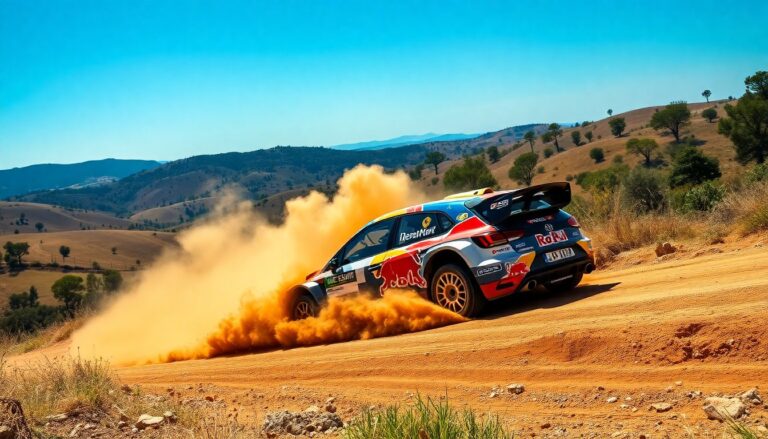Argomenti trattati
The world of rally racing captivates with its exhilarating blend of speed, skill, and unpredictability. Unlike traditional motorsports held on closed circuits, rally racing takes place on public or private roads. It often features a mix of surfaces, including gravel, tarmac, and snow, presenting unique challenges for drivers and enhancing the excitement for fans who witness the thrilling spectacle.
Rally racing has its origins in the early 20th century and has since evolved into a highly competitive sport with a passionate following. Events like the World Rally Championship (WRC) showcase top drivers and teams from around the globe, each competing for victory across various terrains and conditions. This article explores the key elements contributing to the appeal of rally racing, focusing on its rich history, technical challenges, and the vital role of teamwork.
The rich history of rally racing
The roots of rally racing can be traced back to the Paris-Roubaix race in 1896, one of the earliest long-distance automobile races. However, it was not until the 1950s that rallying began to solidify its status as a formal sport. Events like the Monte Carlo Rally paved the way for what would become a global phenomenon. Over the decades, rally racing’s growth has been fueled by technological advancements and increased media coverage.
A significant milestone in rally history occurred in the 1970s when manufacturers like Ford and Lancia invested heavily in the sport. Their involvement led to the creation of iconic vehicles such as the Ford Escort RS1800 and the Lancia Stratos, which dominated the stages. These cars not only showcased impressive performance but also captured the imagination of fans worldwide.
The evolution of rally cars
Rally cars have undergone remarkable transformation since their inception. Modern rally vehicles are equipped with advanced technology and engineering, making them both powerful and agile. Features such as all-wheel drive, turbocharged engines, and sophisticated suspension systems enable drivers to navigate challenging terrains with ease.
Safety is another crucial aspect of rally car design. Drivers are safeguarded by roll cages, fire-resistant suits, and helmets, ensuring their protection in high-speed collisions or rollovers. As the sport evolved, so too did the regulations surrounding vehicle specifications, leading to the establishment of classes such as World Rally Cars and Group N, which define the performance and technical requirements for competition.
A distinctive feature of rally racing is the role of the co-driver. Unlike most motorsport formats, where drivers rely solely on their instincts, rally drivers must collaborate closely with their co-drivers to navigate complex courses. The co-driver reads pace notes—detailed descriptions of the road ahead—that allow the driver to anticipate turns, jumps, and obstacles.
This partnership is essential for success, as effective communication between the driver and co-driver can determine the outcome of a race. The dynamic between them is often compared to a dance, where both must synchronize to tackle the unpredictable nature of rally stages.
Teamwork and strategy
Teamwork in rally racing extends beyond the driver and co-driver. A rally team typically includes mechanics, engineers, and support personnel who work diligently to ensure the car remains in optimal condition. Crews perform quick repairs and adjustments during events, underscoring the importance of strategy and preparation in rally racing.
Additionally, teams must consider factors such as tire selection and fuel management, which can significantly impact performance on varying surfaces and weather conditions. The ability to adapt and make quick decisions is vital, emphasizing the multifaceted nature of rally racing.
The allure of rally racing
Rally racing has its origins in the early 20th century and has since evolved into a highly competitive sport with a passionate following. Events like the World Rally Championship (WRC) showcase top drivers and teams from around the globe, each competing for victory across various terrains and conditions. This article explores the key elements contributing to the appeal of rally racing, focusing on its rich history, technical challenges, and the vital role of teamwork.0

